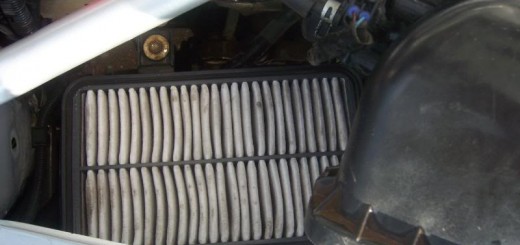Here’s a mod I’ve wanted to do as a component of Operation Total Shifting Excellence. As you know, the Spyder has a fairly loose shifter mechanism. You can eliminate play in the shifter by removing the rubber bushings under the shifter cage and replacing them with metal bushings. But there’s one last culprit left in the mechanism you have to chase down – the rubber bushings at the transmission end. There are two – here’s the one on the right:

And the one just to the left of it:

These two bushings are metal sleeves inside rubber washers inside the loops of the shifter-cable ends. When you shift, the pin that runs through the metal sleeve compresses the rubber that surrounds it, introducing a softness to the shifting process. Why did Toyota do this? One theory (posted at newcelica.org) is that the rubber bushings reduce potential vibration in the stick. It’s all part of the general automotive conspiracy to insulate the driver from the terrors of “road feel.” Well, we’re gonna correct that right now.
Here’s the kit:

Get it here: http://www.speed-source.net/
Or here: http://www.twosrus.com/catalog/product_inf…?products_id=78
A page of instructions comes with the bushings. None of the links to the speedsource online instructions work – they all deliver a “404.” So we’ll follow the paper directions. First, use pliers to remove the cotter pin on the upper (right) bushing:

Next, you remove a metal washer on top of the bushing, then you’re supposed to push at the bushing with the end of a screwdriver and it “should just pop out.” Well it doesn’t. You can lean on that sucker all day long and it’s going nowhere. I considered drilling it out, cutting it out with an Xacto knife, all kinds of stuff that would lead to a trip to the ER. Finally, I found a way to get leverage:

In the pic, you’ll see that I threaded a nut and washer combo on the end of a carriage bolt, then slipped that through the inner sleeve of the OEM bushing. By grabbing the end of the bolt with pliers, you can twist the bushing out just like popping a beer cap. Comes out like buddah. This is the trick I wanted to share with you.
Now clean the shifter bracket post, sand it lightly, grease it, and affix the brass insert. The instructions say to fit the insert to the end of the cable and clamp it in place with the e-clip. Don’t. Instead, affix the metal bushing to the post, then slip the cable bracket end over the bushing. And now lock it in place with the e-clip. This is much easier. The final result looks like this:

Once you’ve done the right (upper) bushing, the left (lower) bushing is easy to swap. The metal inserts are different, and the one for the lower arm is marked “L,” which conveniently is the same as the “L” in left.
Use heavy gloves or the bloody knuckles are on you.
Driving impressions
Aww yeah. More “snick-snick” action. Not quite the feel of a British gearbox, but this is as close as you’re gonna get it. Surprisingly, the shifting is not only more notchy, but it’s smoother too. Your 0 – 60 times may improve because the gears shift more cleanly and accurately. It’s like before they were approximating the target and now they hit it dead on, every time (2ZZ guys: this may be a defense against YAMS). I don’t know about you, but when I shift, I want to be a pro hitman putting the crosshairs on the target. Slam that stick, you’re in gear. This mod totally rocks.
Update: No apparent increase in stick vibration – the OEM bushings serve no purpose except adding play where you don’t want it.
This documentation in no way replaces the Toyota MR2 Repair Manuals. The purpose of this content is only to provide supplementary information to fellow MR2 enthusiasts. Midship Runabout and its contributing authors will not be held responsible for any injury or damages that may occur as the result of practicing any of the methods or procedures described within this website. Article and photo submissions are property of the contributing author.

